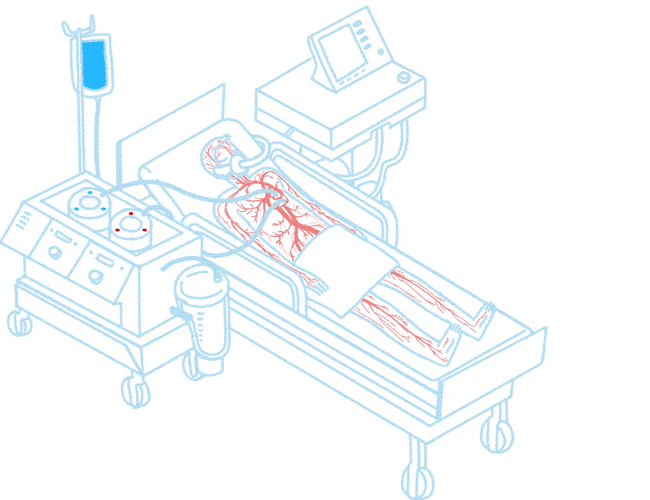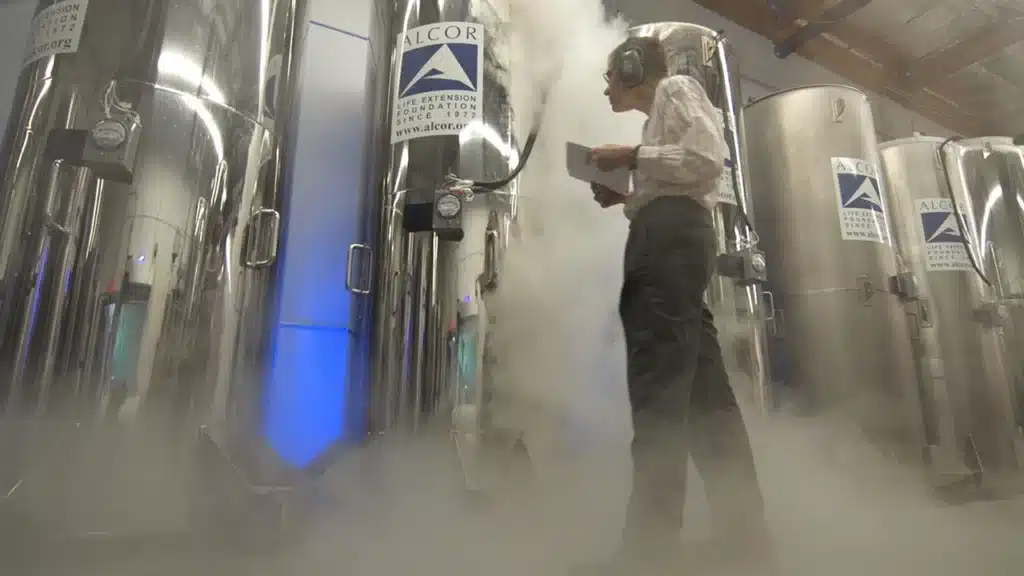You know the Alcor? There's no way you've never heard of it. It is a non-profit organization founded in 1972 that works to support, research and improve the science of cryonics, in which humans are preserved in liquid nitrogen at a temperature of -196 degrees Celsius (-320,8 degrees Fahrenheit) . Absolute zero, the temperature at which atoms stop moving, is about 77°C “lower.”
La Alcor (or, more formally, the Alcor Life Extension Foundation) is located in Arizona, one of the areas in the United States least prone to natural disasters. That's not bad, if you consider that a body could remain there "suspended" for centuries.
The only other major organizations for cryonics are the Cryonics Institute, born in 1976 also in the USA, and the Kriorus, in Russia. Both groups are engaged in ongoing research to make cryopreservation socially acceptable and also more effective at reducing the damage animal cells endure when subjected to such a process.
Is cryonics a viable option?
Several animals are known to have endured freezing temperatures and then revived without problems: five species of frogs, several species of turtles, a salamander and a snake. In these amphibians and reptiles, urea and glucose concentrations naturally increase, preventing the formation of ice crystals in their cells. Water bears (tardigrades), those creatures barely visible to the naked eye that live almost everywhere on Earth, also use a high concentration of a type of sugar molecule as a cryoprotectant.
Alcor started by cryopreserving customers' heads. Later, it transitioned to offering whole-body cryopreservation. The cost is approximately $80.000 for neuropreservation and $200.000 for whole-body preservation. Payment can be in cash, or with a life insurance policy in the same amount. This, at least in theory, makes the "cryonic road" accessible to more or less everyone.

How to get hibernated in four steps
Once you have formalized your registration (and paid, or given proof of the policy), you become an Alcor member. When the time comes (as late as possible), a Foundation team will show up to start the process. A cryonic suspension consists of four phases. For more details you can find them here in detail, but in short they are these:
Deployment and Standby: the "best" scenario is that we are able to notify Alcor (or another of the groups dealing with cryonics) in good time. And that's the best case scenario, because in theory the faster the cryopreservation process is done, the better. Cells have less time to deteriorate.
Stabilization: After the legal declaration of death, the responding team carries out numerous procedures to avoid deterioration of the body: ventilation, restoration of circulation, injection of anticoagulant drugs and the initiation of rapid cooling.
Cryoprotective perfusion: Once the body is transported to the headquarters of a cryonics organization, the blood is replaced with a “vitrifying” solution. If the program concerns only neuropreservation, the head is removed and only that is perfused (who knows, in the future the head transplant it could be a simple practice).
Cryogenic Cooling: the key moment, that of the liquid nitrogen bath, up to the final temperature. Whole heads and bodies are stored top to bottom, so that in the unlikely event of a coolant leak the brain is the last part that would be “thawed.”
After the cryonic procedure, the body (or just the head) will be kept for years in an aluminum cylinder no more than 3 meters high.

Why do people do this?
Many do it out of passion, others out of optimism. Still others by bet: the bet on scientific progress and its increasingly rapid pace. The world's civilizations have gone from steam to the internet, space travel and robotics in just over 100 years.
The next 100 years promise great advances in the field of the energy, genetics e space technology. The world will witness the realization of many technological marvels that today seem like only dreams of science fiction creators and visionaries.
And this is what makes us human: dreaming "throwing your heart over the obstacle" and then working to make the dream come true. This applies to everything, even cryonics.

Cryonics: What Can Go Wrong?
It will take the best of nanotechnology and medicine we can imagine to take people who hibernated in the late 20th and early 21st centuries and revive them.
Key help could come from nanorobots, to help repair cellular damage caused by extremely low temperatures. Completely repairing a frozen brain and body may not be possible for another 100, 200, 300 years, if ever. But there are other possibilities: cloning technologies, or mind transfer (the so-calleduploading“) and they could come in handy. Maybe.
In the end, and at least for the moment, cryonics is "just" a burial method different from the others. One with a philosophy opposite to that of cremation: which preserves the body just in case, in the remote possibility that one day what is now science fiction becomes reality.
Maybe the chance is 0,0000000001%. Or maybe less. But with traditional cremation or burial, the probability is split zero.
It might not work though. Or yes. And whoever waits in an icy cylinder today will open their eyes to a future we can't even imagine.


